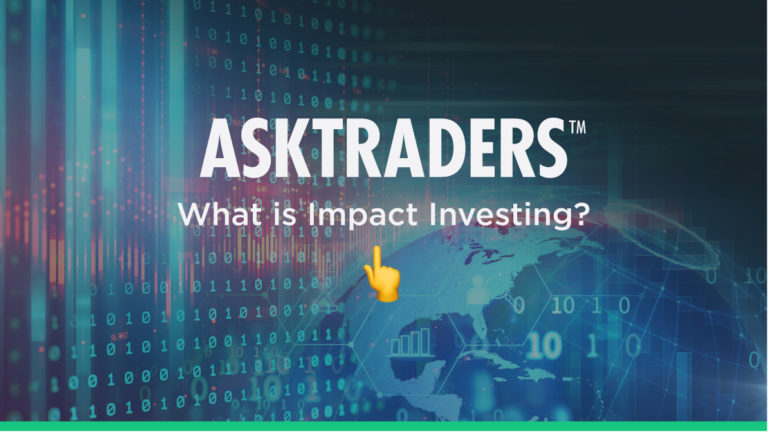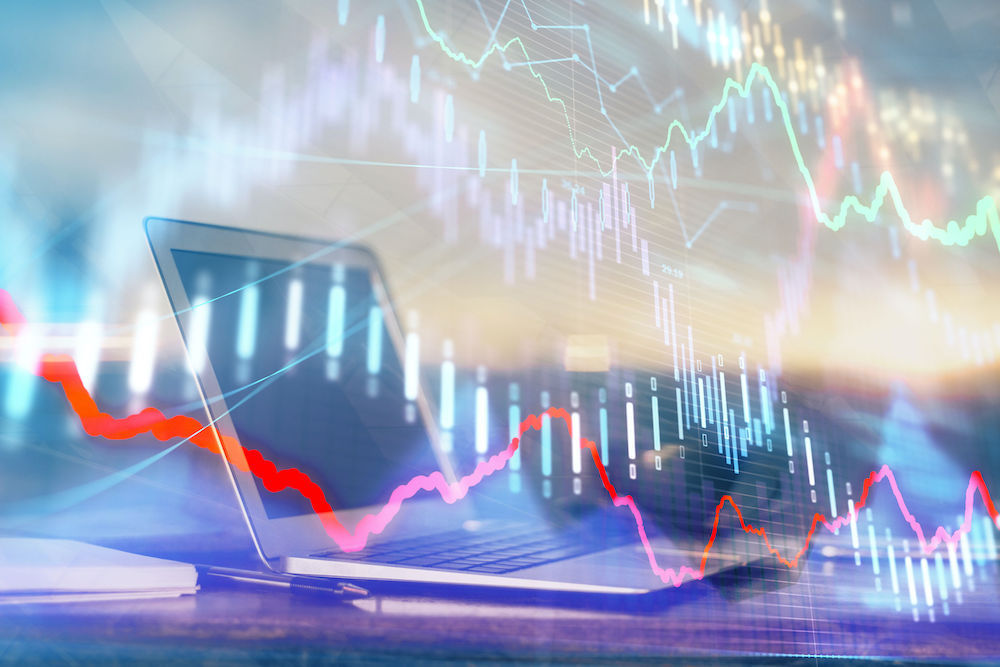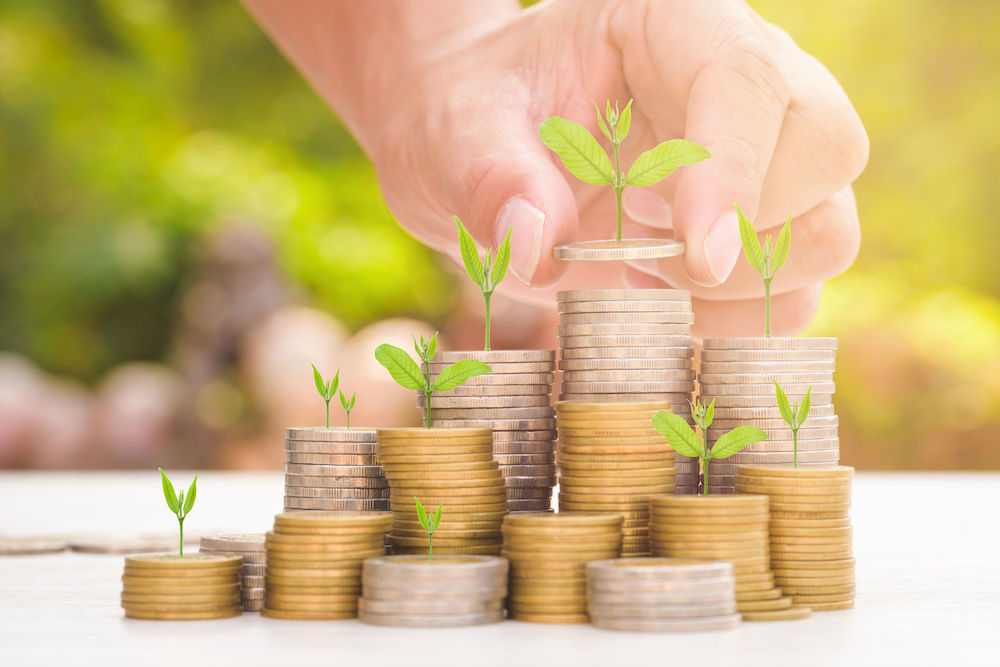
Sitting somewhere between all-out capitalism and charitable donations, impact investing is developing a niche that offers some investors the best of both worlds. There are also arguments that it’s one of the more effective ways of developing projects with a feel-good element.
Spotting the next investment trend is always important. Cryptocurrencies and social media, for example, have revolutionised the financial markets and those who got to grips with those concepts right from the off were in the best position to benefit. Even if you don’t opt to place hard cash in the impact investing sector, understanding the basics of the growing trend puts you in a stronger position to understand the way investor sentiment is heading.

What is Impact Investing?
The Global Impact Investing Network, GIIN is widely regarded as the go-to source for information on impact investing. The organisation’s definition states that “impact investments are investments made with the intention to generate positive, measurable social and environmental impact alongside a financial return.”
Source: GIIN
Adding more colour to the situation, GIIN CEO and founder Amit Bouri added to the definition by explaining:
“Impact investments are investments made into companies, organizations, and funds with the intention to generate social and environmental impact alongside a financial return. Impact investments can be made in both emerging and developed markets and target a range of returns from below market to market rate, depending upon investors’ objectives.”
Source: Forbes
Bouri’s definition highlights the number of grey areas around the subject. The participants involved range from venture capitalists to the Catholic church. Investment vehicles used to implement the programmes range from Exchange Traded Funds (ETFs) to long-term loans. The beneficiaries are also diverse in nature, with projects including urban regeneration in developed countries and micro-finance initiatives in rural areas of the developing world.
There is some crossover with crowdfunding projects, with most regarding impact investment as having two characteristics that differentiate it from that kind of online fundraising. The first is size – impact investment projects typically start at the $1,000 price level and can run into the millions. The second is that impact investment projects are intended to be ‘for-profit’ operations. They aren’t classic mainstream – cash is king – investments, but nor are they charitable donations. Impact investors intend to help set up successful businesses with viable business models – businesses that operate in line with a mandate that encourages long-term social and ecological gain.
A Clear Intention to Make an Impact
Positive change is part of impact investing’s DNA. While some purely commercial operations, such as a bicycle shop, might also be associated with societal or environmental benefits, for impact investors the changes need to be intentional and issue-specific.
Impact investing comes about as a result of the need to address a particular problem. The funds can often be used as a catalyst which will be a game-changer for a location or sector. Key themes in recent years include clean energy access, financial inclusion, health, and affordable housing.

Using Data to Measure that Impact
Another important feature of impact investing is that the benefits need to be measurable, and as importantly, measured. While the commonly used metric for traditional investing is ROI (Return on Investment), in impact investing other factors are also measured.
Projects aren’t based on hunches, that something ‘might be a good idea’. Nor are the benefits judged by anecdotal opinions such as ‘things appear better now’. Hard data is used to measure performance. Impact investing schemes require the means of measurement to be identified and noted, prior to a project taking place. Less tangible items, such as communal well-being, might be hard to measure but efforts are made to do so.
A template of metrics was outlined when GIIN announced the release of the IRIS+ system in 2019. The IRIS+ protocols are a comprehensive range of measurement tools that allow impact investors to measure, manage and optimise their impact.
Manage Impact Performance
A lot of impact investment schemes are medium and long-term in nature. Given that a project might involve a variety of objectives being met the measurement of performance is ongoing. There are also ‘feedback loops’ so that if a mission is moving off-target it can be realigned. Investors and recipients of investment work together to ensure the ultimate aims are kept in mind.
Impact measurement and management (IMM) under the IRIS+ scheme follows a standardised step-by-step approach.
- Set goals and expectations
- Define strategies
- Select metrics and set targets
- Measure, track, use the data, and report
Contribute to the Growth of the Industry
The impact investment family applies a collegiate style approach to their projects. As none of the projects are get-rich-quick, or get-super-rich schemes, knowledge and feedback are freely shared between the parties.
Applying GIIN principles has allowed investors to develop a shared language and to use industry-standard terminology. That way, goals and performance measures that use generic terms make feedback more valuable and help others benefit when initiating their projects. Crowdsourcing information in this way is a ground-breaking aspect of the impact investing sector. It helps make the schemes more successful, in terms of financial and societal returns. That also develops the profile of impact investing among the wider investment community and attracts new entrants.
Who makes Impact Investments?
The potential for impact investing to become the next trend is demonstrated by the wide range of participants in the sector. They include venture capitalists and sovereign development agencies such as Norfund and the Commonwealth Development Corporation. The Catholic Church has also stepped up its involvement in impact investing and retail investors are also taking more interest in the subject. Each of these investor types could take off in the future, and if just one of them does it will lead to impact investing becoming a significant force in the market.
- Pensions and investment funds
- Private Equity and Venture Capital
- Banks and financial institutions
- Individual investors
- Religious institutions
- Private foundations
Some of the big players in the sector have established investment programs already set up. For a venture capitalist firm or religious institution, it’s simply a case of cloning another fund on its platform but setting it to carry out a more socially conscious investment mandate.
It is also possible for individuals and retail investors to tap into the ethos of impact investing. One of the easiest ways to do so is by using Exchange Traded Funds (ETFs). Thanks to their design, ETFs allow investors to gain exposure to a particular sector or industry.
Those that have sprung up around social impact investing include the SPDR® SSGA Gender Diversity Index ETF which appropriately trades under the ticker SHE. Provided by one of the market giants, State Street, the fund “seeks to provide exposure to US companies that demonstrate greater gender diversity within senior leadership than other firms in their sector” (source: SSGA). To qualify for investment, companies must rank highly in terms of their gender diversity ratios.
Products such as these are supported by regulated online brokers. It takes minutes to sign up for an account and to start putting your money to work. As ETFs are global you can invest in them from most parts of the world. So, if you’re looking for impact investing UK opportunities, you can support projects in a wide range of sectors, some of them at home and others abroad.
How Well do Impact Investments Perform?
Even though impact investing doesn’t completely focus on financial returns, the return-on-investment data is impressive enough. Data covering an impressively long time frame 1956–2019, shows returns not too far off returns from traditional investment schemes. The Private Debt programmes have produced average realised gross returns of 7–8%, just one or two percentage points off average market returns. The private equity initiatives are slightly more off the pace but still generate returns of between 10–11%

An Example of an Impact Investment
The GIIN Research Centre provides investors with information and stories about impact investments in action. One relates to a programme run by market giant Aegon N.V., the multinational life insurance, pensions, and asset management company headquartered in the Netherlands. The firm has a long history of investing in areas that are now termed ‘impact’ and the GIIN protocols have allowed the firm to standardise how it measures its progress.
The firm’s asset management division has assets under management totalling $350bn and doesn’t have a distinct breakout of impact investing. Harald Walkate, Head of Responsible Investment at Aegon explained the Total Portfolio Integration approach when speaking with GIIN:
“If we want to maximize our impact, then we should try to get as much of those big numbers as possible. I think that it would be hard to get to the same type of numbers we’ve achieved if we would have had a separate allocation for impact.”
It’s estimated that $10bn of Aegon’s total portfolio is currently invested in impact investing schemes. Seven of the firm’s 70 staff are denoted as being the impact investing team. In practice, these are actual investments into sectors such as affordable housing, microfinance, and clean energy that generate positive returns.
Impact investing does have some drawbacks. The extensive measuring of societal and environmental benefits incurs additional costs. Don’t forget the business start-ups involved are supposed to be viable operations. The positive element of everything being measured is that it keeps projects honest. The downside is that investors or businesses lose out financially.
It’s also worth noting that although impact investing schemes are intended to bring about public ‘public goods’ some projects can and do misfire. The extensive measuring protocols associated with IRIS+ will, and do flag up instances where projects have a negative societal or environmental impact.
For many investors, the high admin fees associated with impact investing are a price worth paying. The aim is that by collating all that data a wider range of objectives is met. If a return on investment is one of them, then that’s great, but it’s not the only consideration.
Best Brokers for Impact Investing:
eToro: 68% of retail CFD accounts lose money
Take a lookTickmill: FCA Regulated
Take a lookIG: Over 16k stocks to trade
Take a lookIf you are ready to start impact investing you'll need a broker that is regulated, has low fees and a user-friendly platform. Finding one can be a daunting task, which is why we've selected some of our favourites that tick all of these boxes to help you get started.
Final Thoughts
Classic economic models have always struggled to deal with issues such as pollution and impact investing is an increasingly popular way of tackling ‘public bads’. At the other end of the spectrum, charitable giving and aid have at the same time proved to be blunt, short-term instruments that have struggled to address complex issues. Impact investing is a hand up not a handout, and the more success stories the sector generates the greater visibility it will receive.
Impact investing is still forming its identity and in the grand scheme of things is a tiny percentage of the global financial markets. It is a trend worth following though. Since the COVID-19 pandemic, the principles of a fairer form of capitalism have begun to take hold. Public opinion currently appears willing to swing in many and various directions and if consumer sentiment gets behind impact investing it could change the way established ‘capitalist’ businesses operate.
Significant players in the space range from academics to multinational corporations. If the blue-chip firms on the world’s major exchanges feel obliged to adopt GIIN protocols, then investors across the globe will be affected. Impact investing might not make you rich, but it could dent returns. If, or when, we reach that tipping point, that cost will be one that many are willing to bear.
